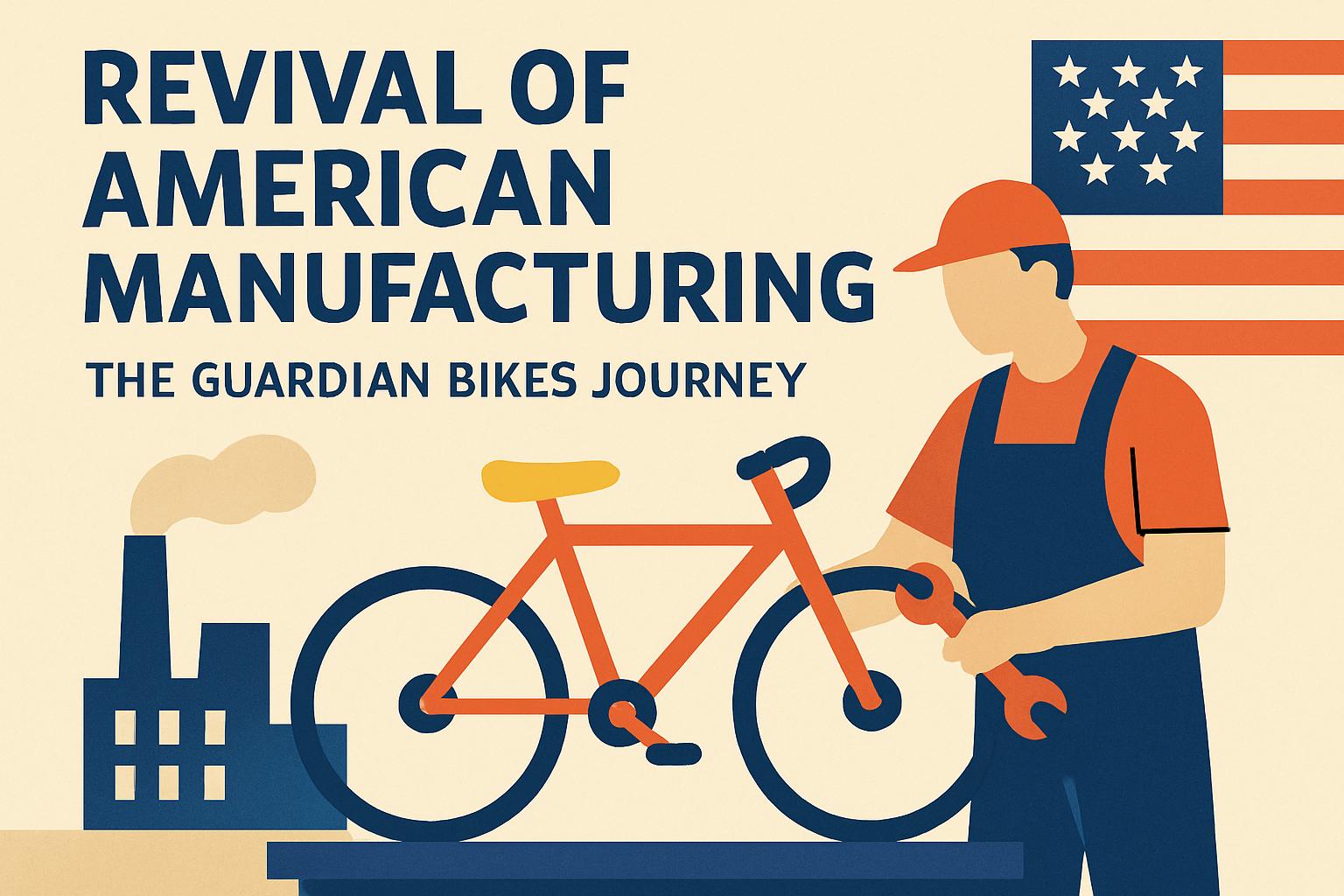In a world driven by globalized supply chains and cost efficiencies, American manufacturing finds itself at a crossroads. With a workforce that has dwindled from nearly 20 million in the 1970s to about 12.7 million today due to offshoring, can American industries reclaim their production prowess on home soil?
Guardian Bikes, based in Seymour, Indiana, takes center stage as a beacon of this potential revival. The company has successfully repatriated a portion of its manufacturing processes from China back to the U.S. Starting in 2022, Guardian transitioned its supply chain to focus on producing high-end children’s bikes domestically. This shift has not only proven feasible but also highly advantageous in terms of automation and localized production.
Challenges and Costs of Repatriation
Guardian’s journey back to U.S. manufacturing is fraught with challenges, notably the sourcing of parts. Despite their strides in boosting production autonomy, reliance on foreign suppliers persists. Brian Riley, General Manager of Guardian Bikes, underscores the hurdles of establishing a local supply chain, a scenario many American manufacturers face as they contended with incomplete domestic infrastructure.
Furthermore, repatriating manufacturing does not always equate to reduced costs. While transportation and inventory costs may be mitigated, the reality is stark—U.S. production costs are substantially higher than overseas due to labor expenses. American workers earn an average of $35 per hour compared to Chinese counterparts at $4, leading to significant cost differentials despite benefits like quality control and quicker delivery.
Policy and Innovation: The Real Catalysts
The Trump administration’s tariffs aimed at revitalizing U.S. manufacturing raised expectations of a broad industrial resurgence. However, many economists debate the efficacy of such policies, suggesting that genuine growth hinges on technological innovation and automation.
Companies like Guardian Bikes showcase how automation can dramatically reduce labor costs, allowing American firms to scale despite high wages. Nevertheless, barriers remain—labor shortages and the need for a skilled workforce present ongoing hurdles in the resurrection of U.S. manufacturing.
Competing with Global Giants
China and Vietnam’s manufacturing sectors continue to flourish due to lower labor costs and more lenient environmental regulations. China, in particular, excels with its massive production scale and investments in worker training, making it a formidable global competitor.
Although U.S. policies like Biden’s 2022 CHIPS Act provide some incentives for niche sectors like semiconductors, broad-based support for all manufacturing remains elusive. This partial coverage leaves many American businesses reliant on low-cost countries for production.
Building a New Foundation
Guardian Bikes exemplifies how repatriated manufacturing can create competitive advantages and economic benefits. By hiring locally, Guardian not only revitalized its production line but also positively impacted the community, repurposing automotive sector workers for bicycle production.
The company plans to further localize its production processes, with an ambitious goal to entirely produce all bike components domestically by 2026. This venture holds promise, as it underscores the potential benefits of American manufacturing: robust quality control, improved logistics, and supply chain resilience.
Despite formidable challenges, the success story of Guardian Bikes illustrates a pathway for American manufacturing’s possible resurgence. Coupled with advancements in technology, supportive tariff policies, and localized initiatives, the prospect of a full-scale reclamation of U.S. manufacturing remains within reach for those enterprises willing to invest in this transformation journey.

![[News] Bitcoin at a Turning Point? 10x Research Signals a Bullish Macro Shift Ahead](https://cryptoexplores.com/wp-content/uploads/2025/06/new20250616.jpg)
![[News] Binance Lists $HOME, the Gas-Free, Bridge-Free All-in-One DeFi App](https://cryptoexplores.com/wp-content/uploads/2025/06/news20250617.jpg)